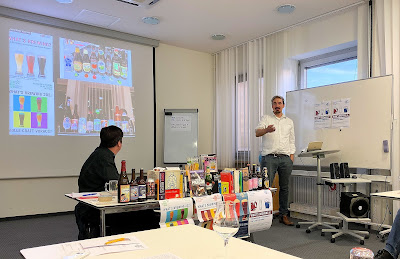*My readers know already that women were just the "other" sex in homophilic Greece.
 |
| Greek settlements in the Mediterranean |
Professor Gehrke had titled his lecture "Education and Freedom," i.e., children in ancient Greece were reared and educated freely: "For of all things the measure is man, of the things that are, or how they are, and of things that are not, or how they are not" (Protagoras of Abdera; Πρωταγόρας, c. 490 BC – c. 420 BC).
The Pnyx in Athens was the meeting place of the people. The Attic democracy meant freedom and self-determination for the free male.
So it is clear that sons must receive a specific form of education, not because it is valuable or necessary, but because it suits a free man (Plato; Πλάτων, 428/427 or 424/423 – 348/347 BC).
A newborn child is like a blank slate. Education must teach children how to live in a community where civility and justice are the basis for cohabitation.
"But who would be a benefactor if not the parents concerning their children? They have created them out of non-existence, and then again, they have given them food and later physical and spiritual education so that they may own not only life but also a good life. Through sport and wrestling lessons, they have helped the body to develop its strengths and good condition, to be agile in posture and movement, while maintaining harmonious balance and civility; but they have fostered the spirit too by teaching reading and writing, arithmetic, and geometry, music, and philosophy in its entirety, which elevates the spirit living in a mortal body and leads it up to heaven, showing it the happy, blessed beings, awakening admiration and longing for the unchanging harmonious order which these beings, obedient to their guide and leader, never abandon" (Philo of Alexandria; Φίλων, c. 20 BC – c. 50)
"If one sows genuine education into a young body, it lives and sprouts throughout his life" (Antiphon; Ἀντιφῶν, youngest brother of the philosopher Plato). However, education is insufficient, for it requires exercise and practice. "Exercise, my friends, means more than good talent" (Epicharmus of Kos; Ἐπίχαρμος ὁ Κῷος, c. 550 BC and c. 460 BC) and "By practice more are good than by nature" (Critias; Κριτίας, c. 460 – 403 BC). "Continued exercise, I tell you, my friend results in a habit; this is eventually solidified in man and becomes natural for him" (Euenus of Paros; Εὔηνος ὁ Πάριος, 5th-century BC)
Democritus (Δημόκριτος c. 460 – c. 370 BC) went so far as that "nature and education are similar. Namely, education transforms man, but this transformation creates nature."
The Greek canon determines western education in the Middle Ages and up to today. The seven liberal arts described above were taught at the first universities. They are allegorically displayed on the porch of Freiburg's Munster Church.
Like a good teacher does, Professor Gehrke summarized his lecture on education in ancient Greece at the end:
1. Education is the prerequisite for a free society.
2. Education is aimed at the ability of free citizens to judge.
3. The training of the mind is connected with the practice of the body.
4. The objects of learning are derived from orientation.
5. There are teachers and learners, care, and intellectual honesty.
*



































